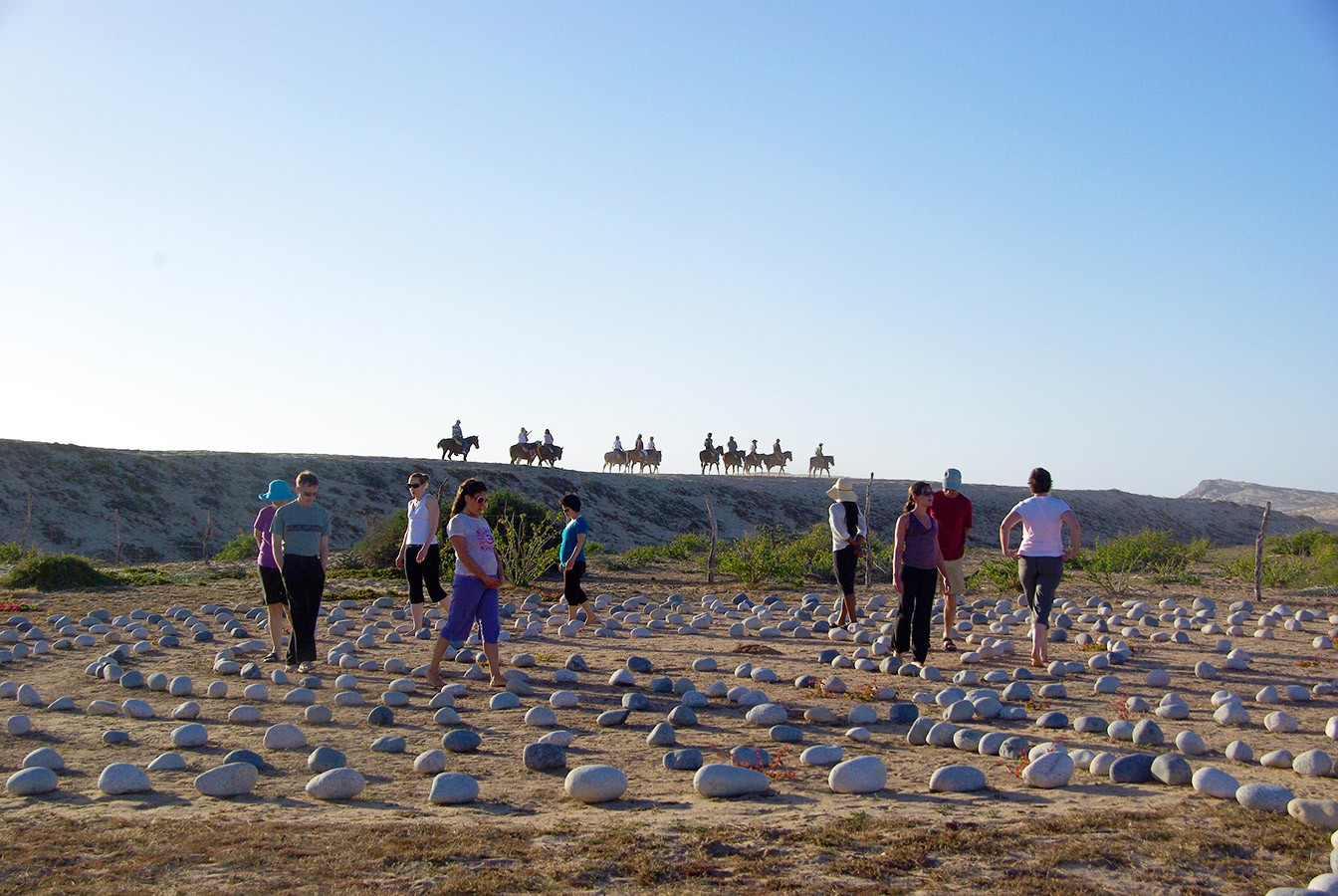
Labyrinths have been a part of human culture since ancient times. Though their individual designs may vary, the basic premise seems to be rooted in a fundamental archetype of human consciousness that recurs throughout recorded history.
An Introduction to Labyrinths
Though there are labyrinths with multiples paths, the most common ones are unicursal – meaning they consist of only a single path. That path is a complex and circuitous journey that leads from the outside through various twists and turns to the center and then back again. With the destination never in doubt and with no place to get lost along the way, walking the labyrinth becomes a meditative journey rather than a puzzle to master. In this way, the path of the labyrinth offers an internal exploration rather than an external one.
Ancient labyrinths have been found in multiple cultures dating back at least as far as the Bronze Age – from India to the Mediterranean to southern Africa to the Americas. Various designs are carved in petroglyphs or etched on pottery or stamped on early coins. Perhaps the most famous historical example is the labyrinth at Knossos which, in mythological lore, was designed by Daedalus and imprisoned the Minotaur.
Labyrinths continued to flourish during the medieval period when the Chartres Labyrinth was inlayed in the floor of the nave of Chartres Cathedral in France. It still exists to this day and has become a site of pilgrimage over the centuries for those coming to commune with the divine.
That tradition of seeking out greater understanding and deeper wisdom continues today and may be part of the reason why labyrinths are more popular than ever. With greater awareness of the value of meditation and the positive impact that mindfulness can have, many people are realizing that the relaxation and clarity that comes from walking a labyrinth can positively impact their lives.

Yoga Retreats & Labyrinths: Inner Journeys
Since the act of embarking on a yoga retreat is a journey of self-exploration, it seemed only natural that we should add a labyrinth to our property to complement the experience. On an open section of land near our beach, we’ve built a simple, stone labyrinth that offers the perfect location for walking meditation and quiet contemplation.
Whether you are looking to clear your mind entirely or, perhaps, place focus and intention on one particular aspect of your life or question that you may have, a labyrinth can serve as a tool to assist you. Integrating mindful movement, focused concentration, and an openness to insight can set the stage for greater clarity and understanding to arise spontaneously.
Oftentimes, guests will head out to the labyrinth solo, following its winding pathway to the center, rest there for a time, and then retrace their steps back out. There is something soothing and rhythmic about following the circuit of a labyrinth. It allows the analytic mind the chance to take a break from navigation, opening you to an intuitive viewpoint that might resonate more deeply. Though you inevitably arrive at the same place you started, rarely is your perspective the same upon exiting.
It’s also powerful to witness a group walking the labyrinth together, each at their own pace. Though everyone treads the same path, all particpants their own individual journey. Guests pass one another in silence or with a discreet nod or acknowledgement, understanding that – while sharing a similar trajectory – they also experience unique sensations and insights along the way. Spending time together, simultaneously in motion and in silence, can be very powerful.
Metaphorically, your path to the center of a labyrinth can be seen as a journey to the deepest part of yourself. And the path outward can be your return back into the world – hopefully, with a greater sense of clarity and renewed energy.
Being on retreat allows you to step away from everyday life for a time to gain perspective and to reassess your priorities. Within the context of a yoga retreat, walking a labyrinth can distill that experience even further. It creates an opportunity for mindfulness and self-discovery – and prepares you to take what you learn during your time away and apply it upon your return.
So when you come to visit us, pause on your walk back from the beach sometime. Take a moment to set an intention or ask yourself a question – and then embark on a little journey within our labyrinth. You may be surprised what you discover.


